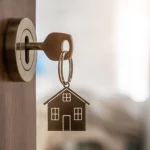In the world of real estate, timing can be everything. Yet, aligning the purchase of a new home with the sale of an existing one is often easier said than done. Here’s where bridging loans come into play. This blog post aims to demystify what bridging loans are and how they can facilitate the process of buying and selling property.
What is a Bridging Loan?
A bridging loan, as the name suggests, serves as a ‘bridge’ in the property buying and selling process. It’s a short-term loan that allows you to purchase a new property before selling your current one. Essentially, it provides the funds needed to ‘bridge’ the gap between the sale and purchase transactions.
Bridging loans are often used in real estate to cover the costs of a new home, while the current home is being sold. They provide homeowners with the flexibility to move on a new property without having to wait for the sale of their existing property.
How Does a Bridging Loan Work?
A bridging loan typically involves high-interest rates and requires that you have enough equity in your existing property to secure the loan.
The size of the loan is usually determined by the value of your existing property and the amount of mortgage left on it. Typically, lenders allow for a loan that brings your total borrowing up to a certain percentage of the value of both properties – often around 75-80%.
There are two types of bridging loans: ‘Closed’ bridging loans and ‘Open’ bridging loans. Closed loans have a fixed repayment date, whereas Open loans do not, but must usually be paid off within 12 months.
Benefits of Bridging Loans
Seamless Property Transitions: Bridging loans allow you to secure your dream property without waiting for your current home to sell.
Interest Capitalization: Some lenders offer the option to capitalize the interest for the term of the bridge, which means no repayments are necessary until your current home is sold.
Flexibility: These loans offer flexibility with repayment options, usually not requiring repayments until the current property is sold.
No Need for Rental Accommodation: Bridging loans remove the need for temporary rental accommodation while waiting for the sale of your existing property and the purchase of a new one, saving time and money.

Things to Consider
Despite the benefits, bridging loans do come with considerations:
High-Interest Rates: Bridging loans often come with high-interest rates compared to standard home loans.
Additional Debt: A bridging loan will add to your debt. It’s crucial to ensure that you can handle these repayments in addition to your new mortgage.
Market Risks: If your existing home takes longer than expected to sell or sells for less than expected, you may end up in financial trouble.
In conclusion, while a bridging loan can be an effective tool to ease the process of buying and selling a property simultaneously, they are not without risk. It’s crucial to understand the terms of the loan, assess your financial capability to repay it, and seek professional advice. With the right preparation and understanding, a bridging loan could be just the tool you need to make your next property move as seamless as possible.
















